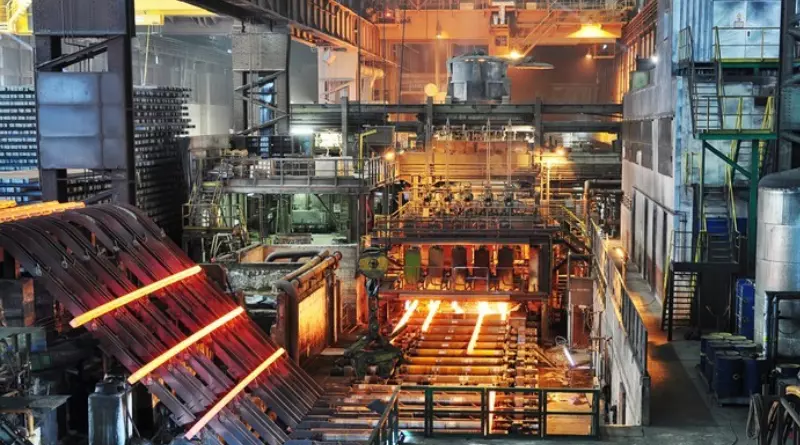Steel Production Challenges

Steel production holds a crucial position in numerous industries, spanning from construction to manufacturing. As a remarkably versatile and enduring material, the global demand for steel remains consistently high. Nevertheless, the process of steel production is not devoid of challenges. In this article, we will delve into the intricacies of steel production and examine the key obstacles faced by the industry. By gaining a deeper understanding of these challenges, we can pinpoint effective strategies and solutions to surmount them, ultimately ensuring a seamless production process. Join us on this journey as we tackle the challenges in steel production and strive for excellence in this vital industry.
Challenges Faced in Steel Production
Steel production entails a multitude of challenges that must be addressed to maintain efficiency and quality. Let’s examine some of the key obstacles encountered in the process and explore potential solutions to overcome them. By understanding and addressing these challenges head-on, the steel industry can enhance its production capabilities and achieve greater success.
Challenges in Steel Production: Navigating the Path to Success
- Procuring Raw Materials: Ensuring a Stable Supply
Obtaining an adequate and consistent supply of raw materials, such as iron ore, coal, and limestone, poses a challenge. Market fluctuations, geopolitical factors, and transportation issues can disrupt the supply chain. Steel producers must establish strong supplier relationships, diversify sourcing strategies, and secure long-term agreements to maintain a steady supply.
- Managing Energy: Balancing Efficiency and Sustainability
Steel production is energy-intensive, leading to significant electricity and fuel consumption. Balancing efficiency with sustainable practices is a challenge. Implementing energy-efficient technologies and adopting renewable energy sources, such as electric arc furnaces and hydrogen-based processes, can reduce carbon emissions while ensuring productivity.
- Environmental Regulations: Meeting Stringent Standards
Adhering to strict environmental regulations aimed at reducing pollution and waste generation is a challenge. Steel producers must invest in pollution control technologies, waste management systems, and sustainable practices to comply with regulations and promote eco-friendly operations.
- Cost Management: Striking a Balance Between Profitability and Affordability
Managing costs in steel production is a perpetual challenge due to fluctuations in raw material prices, energy costs, and labor expenses. Optimizing operational efficiency, streamlining the supply chain, and leveraging automation and digitization can help reduce costs and maintain competitiveness.
- Quality Control: Ensuring Consistency and Reliability
Maintaining consistent quality standards is crucial for steel production. Variations in raw materials, process parameters, and equipment performance pose challenges. Stringent quality control measures, regular inspections, and advanced testing equipment are essential to ensure reliable and high-quality steel products.
- Skilled Workforce: Nurturing Talent and Expertise
Attracting and retaining a skilled workforce with specialized knowledge is a continuous challenge. Steel producers must develop comprehensive training programs, collaborate with educational institutions, and provide career advancement opportunities to address the need for skilled professionals.
- Maintenance and Equipment Reliability: Minimizing Downtime
Maintaining equipment reliability and minimizing downtime is critical. Implementing a robust maintenance strategy, including preventive maintenance and condition monitoring, along with leveraging data analytics and predictive maintenance technologies, can optimize equipment performance and reduce unplanned downtime.
- Supply Chain Management: Streamlining Operations
Efficient supply chain management is vital to avoid delays, inventory shortages, and production bottlenecks. Adopting advanced supply chain practices, such as just-in-time inventory systems and real-time tracking technologies, and fostering collaborative partnerships with suppliers can enhance productivity and customer service.
- Market Volatility: Adapting to Changing Demand
Steel production is susceptible to market fluctuations influenced by economic cycles, trade dynamics, and geopolitical factors. Monitoring market trends, diversifying the customer base, and exploring new market segments are essential to adapt to changing demand and maintain competitiveness.
- Technology Integration: Embracing Industry 4.0
Embracing digitalization, automation, and connectivity presents opportunities and challenges. Adopting Industry 4.0 technologies, such as advanced analytics, the Internet of Things (IoT), and artificial intelligence, requires investment in research, pilot projects, and training initiatives. Successfully integrating technology can revolutionize processes and enhance productivity and competitiveness in the steel industry.




